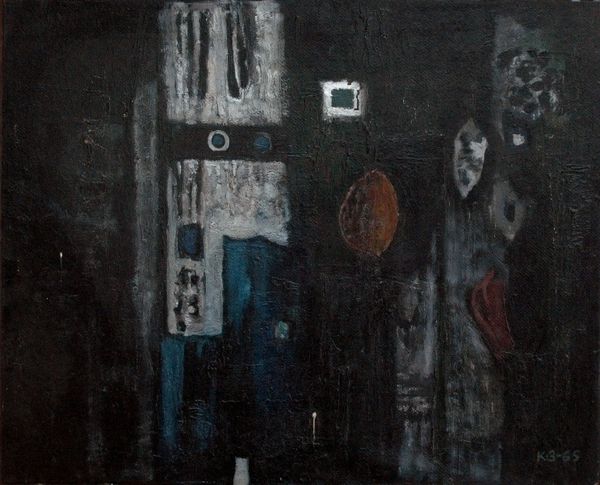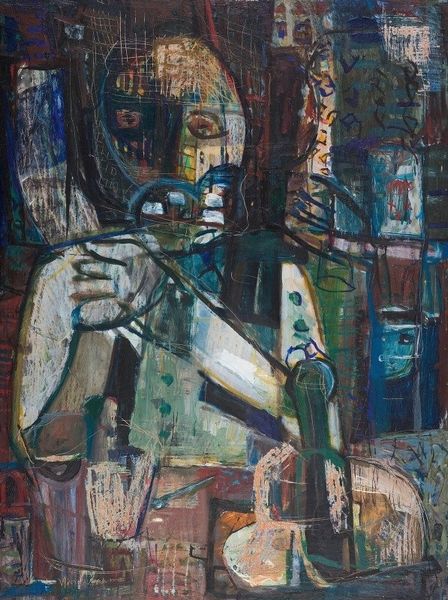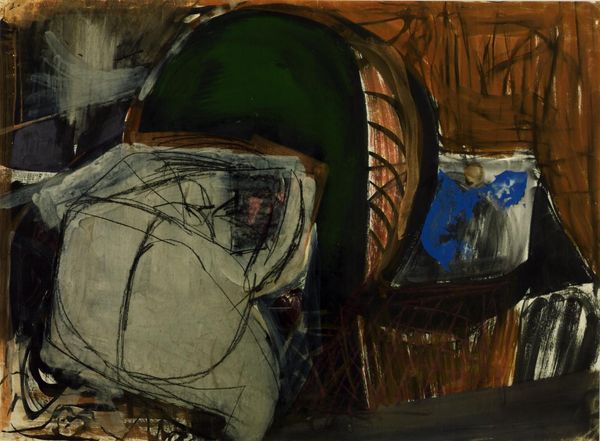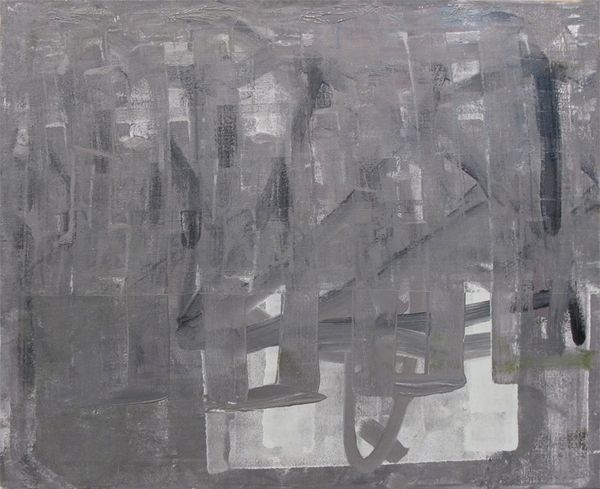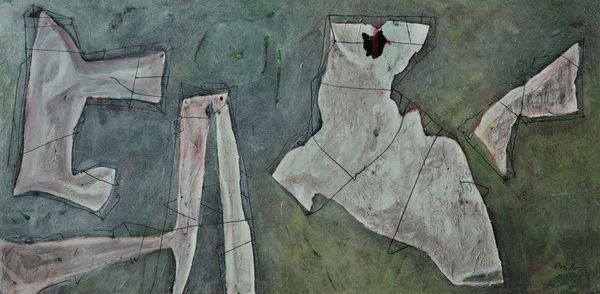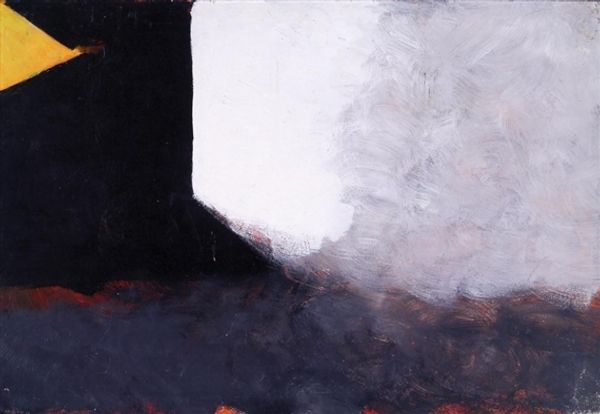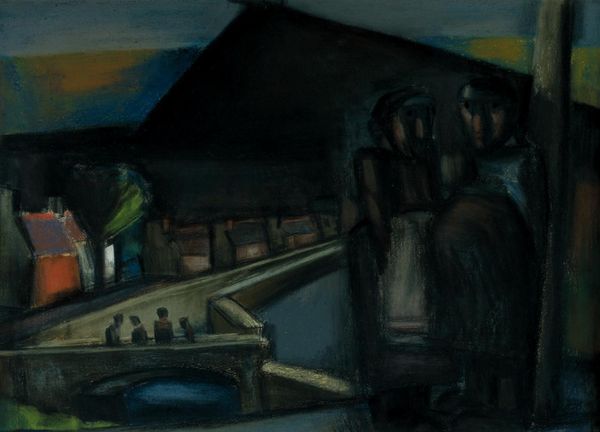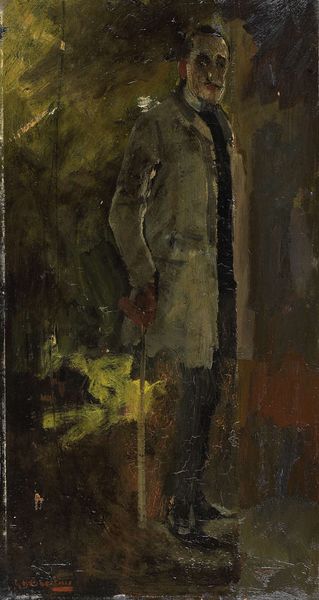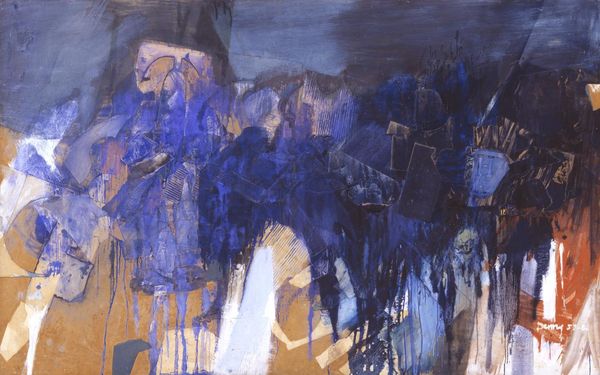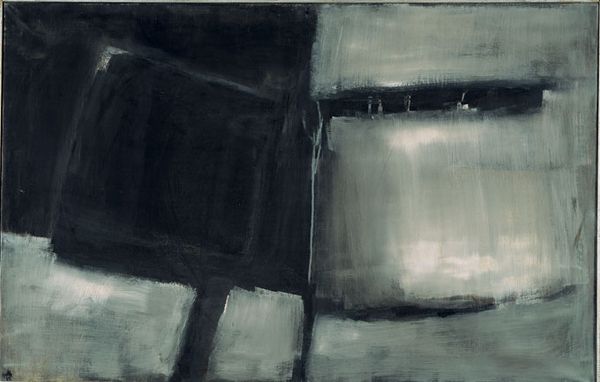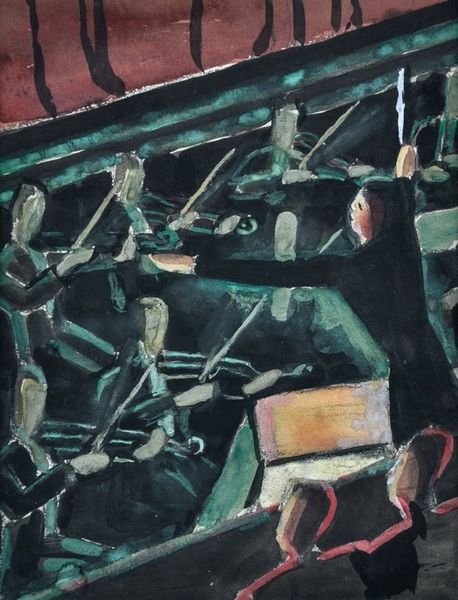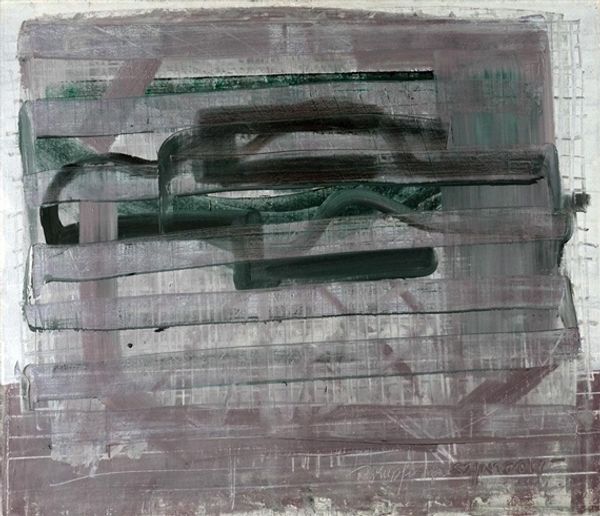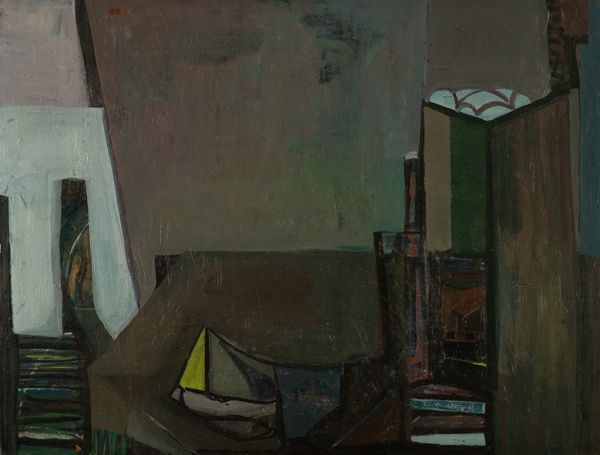
painting, oil-paint
#
painting
#
oil-paint
#
landscape
#
figuration
#
group-portraits
#
expressionism
#
line
#
expressionist
Copyright: Public domain
Editor: So this is *Three Men in a Field* by Josef Capek, painted in 1926, using oil paint. There's a stark, almost unsettling mood to it, isn't there? Those figures are so... undefined. How do you interpret this work? Curator: It's interesting that you find it unsettling. Consider the historical context. This was painted during a period of immense social and political upheaval. I see these figures as representative of the working class, perhaps, their identities blurred by the forces of industrialization and societal change. Editor: Working class, okay. I see what you mean. The lack of individual features makes them seem almost like cogs in a machine. The palette is also so muted and constrained. Is this an intentional strategy to make us think more about the subjects than the setting? Curator: Precisely. The muted colors evoke a sense of anonymity, and that relates to the proletarian experience during the industrial era and subsequent alienation from traditional values. What about their posture? Editor: They are quite still. Almost watchful, perhaps expectant, standing upright as if alert to a sound or watching and waiting for something. There’s almost a sense of latent violence. Do you think that's fair to read in? Curator: Absolutely. This "latent violence," as you call it, speaks to the growing tensions of the time. Capek was a vocal anti-fascist; his brother died in Bergen-Belsen. We could interpret their collective gaze as a form of silent resistance or perhaps the beginning of dissent. The men are almost symbolic, acting as a sign for the future and the political upheaval. The expressionistic form reflects the building of societal unrest and fear, almost a cry of what would come later in the 20th Century. Editor: Wow. I hadn't considered that reading. The personal and the political intertwined in this. I have new ideas of the work and understand Capek more because of our conversation. Curator: Indeed. The power of art is in how it forces us to question, reflect, and situate ourselves within history. The lens of critical thought deepens not just understanding but personal development too!
Comments
No comments
Be the first to comment and join the conversation on the ultimate creative platform.
